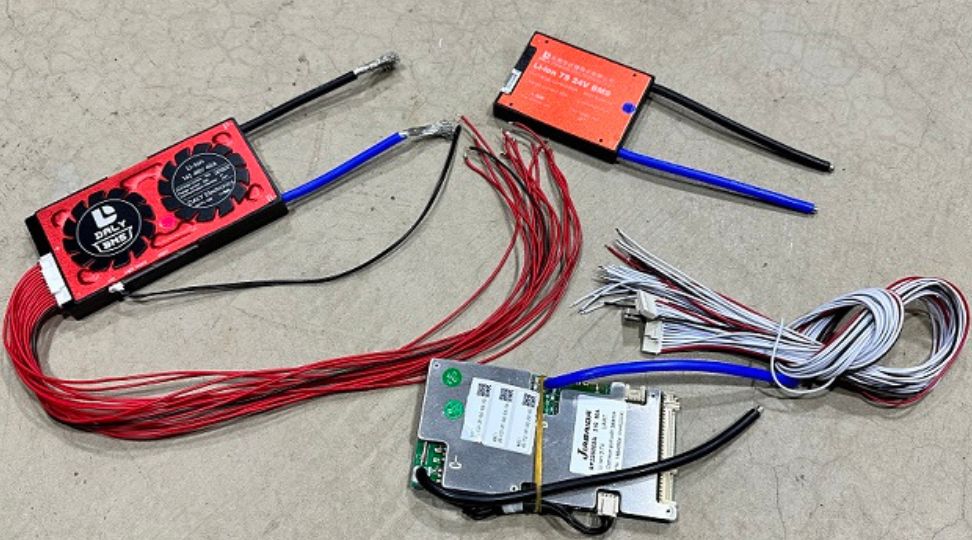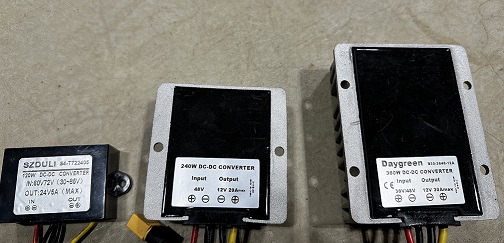
What are the two types of BMS
The two main types of Battery Management Systems (BMS) are common port BMS and separate port BMS. A common port BMS utilizes a single port for both charging and discharging processes, employing a mirrored arrangement of MOSFETs to manage power flow through this one port, making it simpler and often supporting higher charging currents. In contrast, a separate port BMS features two distinct ports, one for charging and another for discharging, allowing for specialized control but resulting in a more complex setup. While the common port BMS is praised for its ease of use and setup, the separate port BMS offers specialized capabilities, such as the ability to continue charging after discharge under low voltage conditions, catering to specific application needs.
When it comes to a BMS, understanding the different types available is very important for anyone involved in the design, implementation, or use of battery technologies. While there are several variants and configurations of BMSs, they essentially boil down to two main types: common port BMS and separate port BMS. Both play pivotal roles in ensuring the safety, efficiency, and longevity of battery packs, but they do so in distinct ways that are worth exploring. Additionally, choosing the best BMS for a battery build can be confusing due to the many options available. Check out our other articles to find the best BMS for lithium and LFP batteries.
[[ aff type=cta ~ bg=`` ~ main=`Guided BMS Picker` ~ second=`Need help picking the best BMS, use the tool found at the link below to get guided to the correct BMS. ` ~ btnText=`BMS Picker` ~ btnLink=`https://cellsaviors.com/bms-picker` ~ align=`center` ]]
Common Port Type BMS: A One-Stop Solution
The common port BMS is a streamlined solution that utilizes a single port for both charging and discharging processes. This type of BMS employs a special arrangement of mirrored MOSFETs (Metal-Oxide-Semiconductor Field-Effect Transistors) to manage the flow of current in and out of the battery pack through this singular port.The design is not only safe but ingeniously simplifies the wiring and setup process, making it a favored option for many applications.
The elegance of the common port BMS lies in its simplicity and efficiency. By eliminating the need for separate charging and discharging pathways, it reduces the complexity of the system, making it easier to wire and set up. This design often supports higher charging currents compared to its separate port counterpart, offering a more straightforward approach to managing battery power.
Despite these advantages, the choice between a common port and a separate port BMS does not hinge solely on ease of use. Cost, reliability, and the specific requirements of the application also play a significant role. However, the common port BMS often emerges as the preferred option for its blend of simplicity, efficiency, and reliability, costing about the same as a separate port BMS when all other factors are equal.
Separate Port Type BMS: Specialized for Specific Needs
On the other hand, a separate port BMS features two distinct ports: one dedicated to charging and the other to discharging. This configuration allows for more specialized control over each process but at the expense of increased complexity in wiring and setup. Unlike the common port BMS, the separate port BMS typically does not employ a mirrored and reversed set of MOSFETs. Instead, it might use one or two MOSFETs dedicated to the charge, leading to different current capacities for charging and discharging.
For example, a separate port BMS might support a discharge current of 50 amps but only a charge current of 5 amps. This disparity highlights the separate port BMS's ability to tailor the battery's performance to specific needs, such as applications requiring a significant difference between charging and discharging rates.
One unique feature of the separate port BMS is its ability to allow a battery to continue charging after discharge would normally be cut off due to low voltage. This capability can be particularly beneficial in certain scenarios, like solar energy storage systems, where it is essential to maximize charging opportunities.
Choosing The Right Type of BMS
Deciding between a common port and a separate port BMS depends on the specific requirements of the application. While the common port BMS offers ease of use, efficiency, and cost-effectiveness, the separate port BMS provides specialized capabilities that might be required for certain applications.
However, it's important to note that advancements in BMS technology are continuously bridging the gap between these two types. Premium, smart BMSs often incorporate features traditionally associated with separate port systems into common port designs, further enhancing their versatility and appeal.
While it's true that ultimately, the choice between a common port and a separate port BMS should be informed by a thorough assessment of the application's needs, most of the time a common port BMS is the ideal solution. Additionally, you can prevent BMS failures by reading our other articles that discuss various causes of BMS failures.
We hope this article helped you understand the two types of BMS. Thanks for reading!


